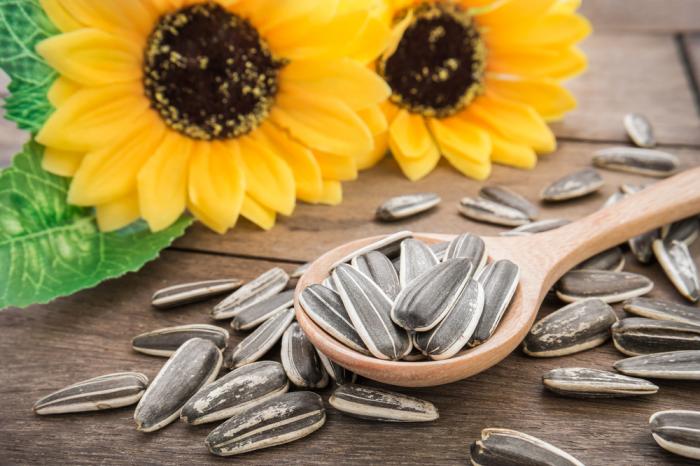Sunflowers are a popular choice for gardeners. They bring vibrant colors and attract pollinators. Drying sunflower seeds for planting is a simple process. This article will guide you through the steps to ensure your seeds are ready for next season’s planting.
Choosing the Right Sunflowers
Before you start drying seeds, choose the right sunflower variety. There are many types of sunflowers. Some are grown for their beauty, while others are cultivated for their seeds. Popular varieties include:
American Giant: Known for its tall stalks and large heads.
Mammoth Grey Stripe: Ideal for seed production.
Lemon Queen: Great for both beauty and seeds.
Choose a variety that suits your garden’s needs. This ensures you get the best seeds for planting.
Harvesting Sunflower Seeds
Timing is key when harvesting sunflower seeds. Wait until the sunflower heads are brown and dry. The petals may start to fall off. This indicates that the seeds are mature and ready for harvesting.
To harvest:
Use scissors or pruners: Cut the head of the sunflower. Leave a few inches of stem attached.
Handle with care: Sunflower heads can be heavy. Avoid dropping them, as this can damage the seeds.
Harvest on a dry day: This prevents moisture from getting into the seeds.
Once you have harvested the sunflower heads, it is time to dry them.
Drying the Sunflower Heads
Drying the sunflower heads properly is crucial for seed preservation. Follow these steps to dry them effectively:
Find a suitable location: Choose a dry, well-ventilated area. Avoid direct sunlight, as this can cause the seeds to lose moisture too quickly.
Hang the sunflowers: Tie the sunflower stems together. Hang them upside down. Use twine or string for this purpose.
Use a paper bag: If you want to collect fallen seeds, place a paper bag over the sunflower head. This catches seeds that may drop during the drying process.
Allow time for drying: Leave the sunflowers to dry for about 2-3 weeks. Check periodically for dryness. The seeds should feel firm and dry to the touch.
Removing the Seeds
Once the sunflower heads are fully dried, it’s time to remove the seeds. This process can be enjoyable and rewarding. Here’s how to do it:
Use your hands: Gently press on the sunflower head. The seeds should easily fall out.
Use a spoon or knife: For stubborn seeds, you can scrape them out using a spoon or knife. Be gentle to avoid damaging the seeds.
Collect the seeds: Gather the seeds in a bowl or container. Separate any debris, such as dried petals or stems.
Cleaning the Seeds
After removing the seeds, it’s important to clean them. This helps remove any remaining debris and prepares them for storage. Follow these steps to clean your seeds:
Rinse the seeds: Place the seeds in a fine mesh strainer. Rinse them under cold water. This helps remove dirt and leftover plant material.
Dry the seeds: Spread the rinsed seeds on a clean towel. Allow them to air dry for several hours. Ensure they are completely dry before storage.
Inspect for damage: Check the seeds for any signs of damage or mold. Discard any that do not look healthy.
Storing the Seeds
Proper storage is essential for keeping your seeds viable for planting. Here are some tips for storing sunflower seeds:
Choose airtight containers: Use glass jars or plastic containers with tight-fitting lids. This keeps moisture out.
Label your containers: Write down the variety and date of harvest. This helps you keep track of your seeds.
Store in a cool, dark place: Ideal storage conditions are in a pantry or a drawer. Avoid areas with high humidity or heat.
Check periodically: Inspect your seeds every few months. Ensure there is no moisture or mold. If you find any issues, remove the affected seeds immediately.
Planting Your Seeds
When it’s time to plant your sunflower seeds, follow these guidelines for success:
Choose the right season: Plant sunflowers in spring after the last frost. This ensures they have enough warmth and sunlight to grow.
Prepare the soil: Choose a sunny spot in your garden. Sunflowers thrive in well-drained soil. Loosen the soil with a garden fork.
Plant the seeds: Sow seeds about 1-2 inches deep. Space them 6-12 inches apart. This gives them room to grow.
Water regularly: Keep the soil moist but not soggy. Watering helps germination and supports healthy growth.
Fertilize if necessary: Use a balanced fertilizer if your soil lacks nutrients. This boosts sunflower growth.
See also: How to Dry Out Flowers for Resin
Conclusion
Drying sunflower seeds for planting is a straightforward process. By choosing the right variety and following the steps outlined, you can ensure a successful harvest. Store your seeds properly, and you’ll be ready to plant when the time comes.
Sunflowers not only brighten your garden but also provide seeds for the next season. Enjoy the satisfaction of growing your sunflowers from seed to bloom. Happy gardening!


